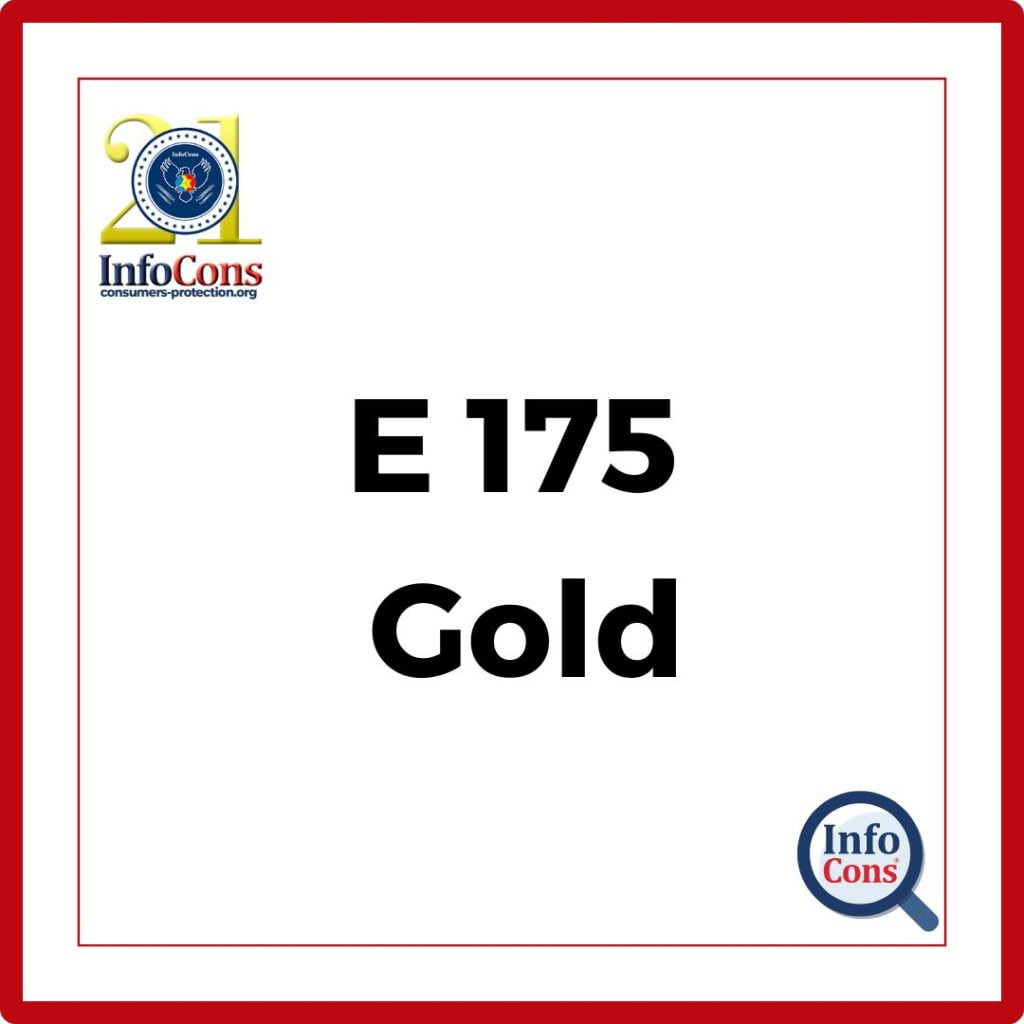E175 is the designation for gold when used as a food additive. It is a metal that has been valued for its aesthetic and symbolic significance for millennia. In the culinary world, it occupies a unique niche, primarily used for decorative purposes in high-end culinary presentations. While the role of gold in food may seem purely extravagant, it has a fascinating history and a distinct place in gastronomy.
Unlike many other food additives, gold does not serve as a preservative or flavor enhancer. Instead, its primary function is decorative, used to add visual appeal to gourmet dishes and luxury foods.
- Appearance: The gold used in foods is typically available in two forms: as gold leaf or as gold dust. Gold leaf consists of extremely thin sheets of gold, while gold dust is gold reduced to a fine powder.
- Purity: The gold used in foods must be at least 22 carats to ensure it is pure enough for human consumption. Higher carats, such as 24, are also accepted.
Consumer Protection Tips : Why is it important to have the European Health Insurance Card ?
What is the Recommended Daily Dose ?
In the European Union, E175 is approved under specific conditions and must meet criteria for purity and safety. Similar regulations are in place in other parts of the world, although approval status and guidelines may vary.
Although E175 is not toxic, it is recommended to consume it in moderation, as excessive intake may lead to complications, especially in individuals with certain health conditions.
The European Food Safety Authority (EFSA) has concluded that estimates of gold exposure (E175) have reached up to 1.32 µg/kg body weight per day in a maximum exposure scenario assessment.
Read also – E 174 Silver . InfoCons Consumer Protection informs you in which food products this food additive can be found .
In Which Products Can E175 Be Found ?
E175 is used in various gourmet culinary preparations:
- Desserts: Gold leaf or dust is often used to adorn cakes, chocolates, and other desserts, adding a touch of luxury.
- Beverages: Some premium spirits, such as vodka and champagne, feature gold flakes for added sparkle. It is also used in some teas.
- Garnishes: Gold is sometimes used to garnish sushi, caviar, and other luxury dishes, making them visually spectacular.
Contraindications and Risks
Despite its luxurious profile, gold as a food additive must adhere to strict regulations to ensure food safety. Gold is chemically inert, meaning it does not react with other substances, making it non-toxic and safe for human consumption.
Do you know what Food Additive E172 is ? Consumer Protection InfoCons Informs You!
Conclusion
E175 is a unique food additive associated with luxury and extravagance. Its use in food goes beyond being a mere decorative element; it represents a long-standing tradition of using precious metals to signify wealth and opulence.
As with any food additive, the use of E175 should be approached with an understanding of regulatory guidelines to ensure that its application enhances rather than detracts from the culinary experience.
Look for products that have a cleaner label or use natural additives. By installing Consumer Protection InfoCons App and scanning the barcodes of food products, you can find out the number and type of food additives they contain.
Sources:
https://www.efsa.europa.eu/ – The European Food Safety Authority
Author – Cosmina Nițu
Master in Nutrition – Infant and new born nutrition
